In the vast expanse of the sky, the mesmerizing sight of birds flying in a V formation is both captivating and enigmatic.
This avian phenomenon, observed during migration, invites us to explore the intricate choreography of nature’s aerial ballet.
The V formation, a display of unity and precision, holds within it a tapestry of survival strategies that have been honed over millennia.
This phenomenon, far from being a random act, showcases the remarkable ways in which birds harness aerodynamics, communication, and social cohesion to navigate vast distances across diverse landscapes.
Unraveling why do birds fly in v formation unveils the secrets of avian migration, highlighting the finely tuned interplay of biology, physics, and cooperation in the avian world.
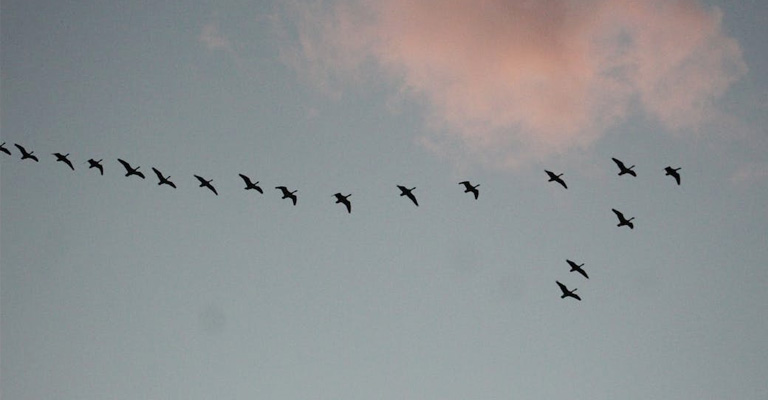
Why Do Birds Fly In V Formation?
Birds flying in a V formation, also known as a “skein” or “wedge,” is a striking sight often observed during migration.
This behavior serves various purposes that aid the birds’ survival and navigation over long distances.
Here are some common reasons for this remarkable phenomenon:
Aerodynamic Efficiency
Flying in a V formation reduces air resistance for the birds behind the leader. The wingtip vortices created by the lead bird provide upwash that helps lift the trailing birds, enabling them to conserve energy during long flights.
Energy Conservation
By taking advantage of the air currents created by the lead bird’s flight, the birds in formation require less effort to maintain their speed. This energy-saving strategy is especially crucial for migratory journeys that span thousands of miles.
Navigation Guidance
Birds can maintain visual contact with their neighboring companions, aiding in navigation.
Following a consistent formation helps them stay on course and orient themselves in the right direction, especially during overcast or low-visibility conditions.
Communication
The V formation facilitates communication among the birds. The audible and visual cues exchanged help maintain cohesion within the group and allow for quick responses to changes in the flight direction or other potential threats.
Leadership Rotation
The lead bird experiences the most air resistance and expends the most energy. To share this demanding role, birds take turns being the leader, allowing each member of the group to benefit from the energy-efficient trailing positions.
Social Bonding
Flying in formation fosters a sense of unity and social bonding among the flock members. This cohesion can be especially important during migration, as it offers protection against predators and increases the group’s chances of survival.
Thermoregulation
Birds flying in a V formation can adjust their positions to regulate their body temperature. By moving closer to or farther away from other birds, they can find the optimal thermal conditions within the group.
Learning Behavior
Young birds in the flock can learn important migration routes, stopover sites, and feeding grounds from experienced adults in the V formation. This sharing of knowledge enhances the chances of successful migration for the next generation.
Collective Decision-Making
The V formation allows for collective decision-making. If the lead bird spots a suitable feeding or resting site, it can signal the group to change direction, ensuring that the entire flock benefits from the discovery.
Birds’ ability to intuitively form and maintain V formations showcases the intricate mechanisms they’ve evolved to thrive in challenging environments.
This behavior demonstrates the remarkable synergy between individual effort and collective survival strategies, offering a captivating glimpse into the world of avian migration.
What Are Some Bird Species That Fly In A V Formation?
Some bird species that fly in a V formation are:
Geese
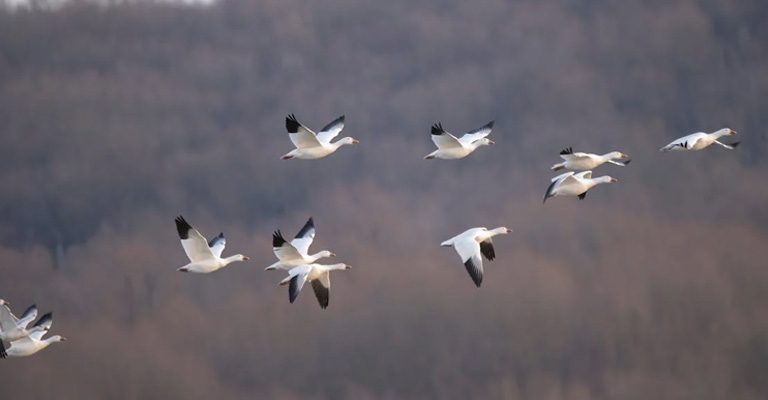
These are waterfowl that feed on grasses, grains, and aquatic plants. Geese fly in a V formation to conserve energy and communicate with each other during their long migrations.
The leader of the formation is usually the oldest and most experienced bird, and it rotates with other birds to share the workload.
Swans
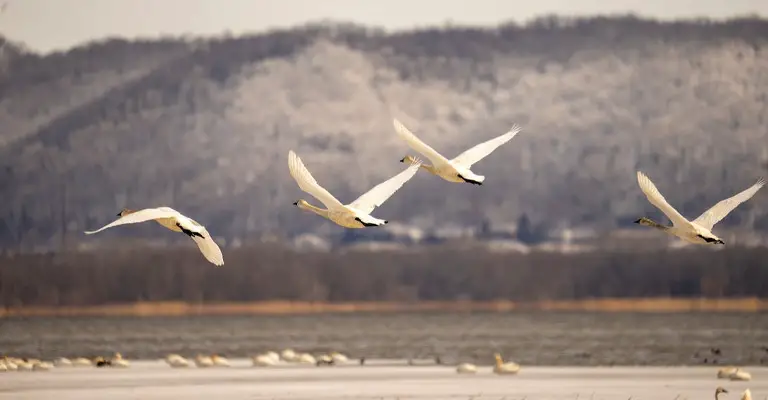
These are large, elegant birds that feed on aquatic plants, insects, and small fish. Swans fly in a V formation to increase their aerodynamic efficiency and stay together as a group.
Swans are mostly monogamous and form pair bonds that last for several years or for life.
Gulls
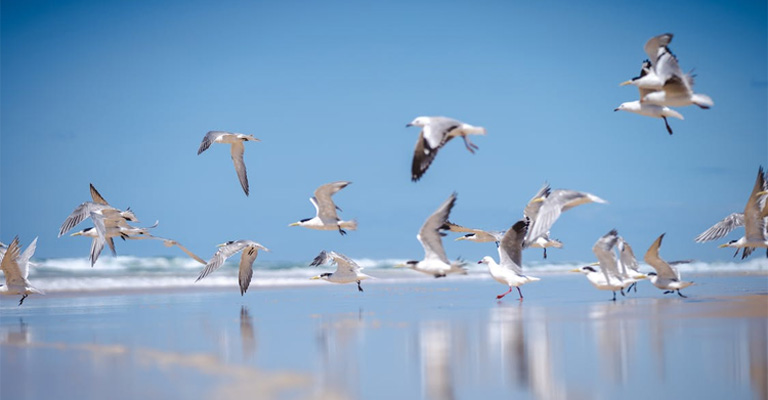
These are seabirds that feed on fish, crustaceans, insects, and garbage. Gulls fly in a V formation to improve their agility and maneuverability in the air. Gulls are very social and form large colonies that cooperate and compete with each other.
Cranes
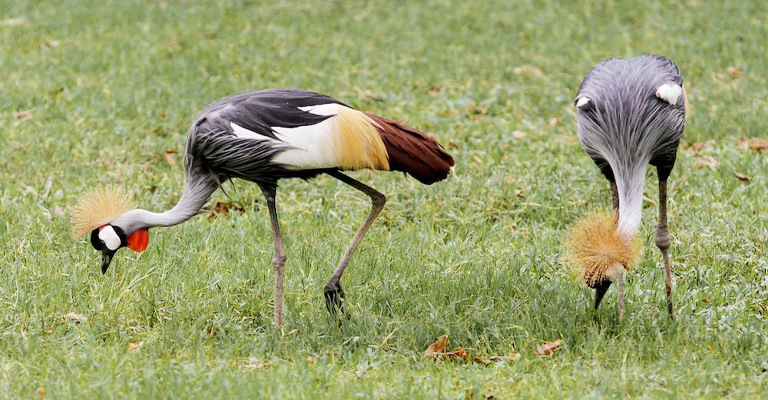
These are wading birds that feed on seeds, grains, insects, and small animals. Cranes fly in a V formation to save energy and communicate with each other during their annual migrations.
Cranes are known for their graceful flight and their loud calls.
Pelicans
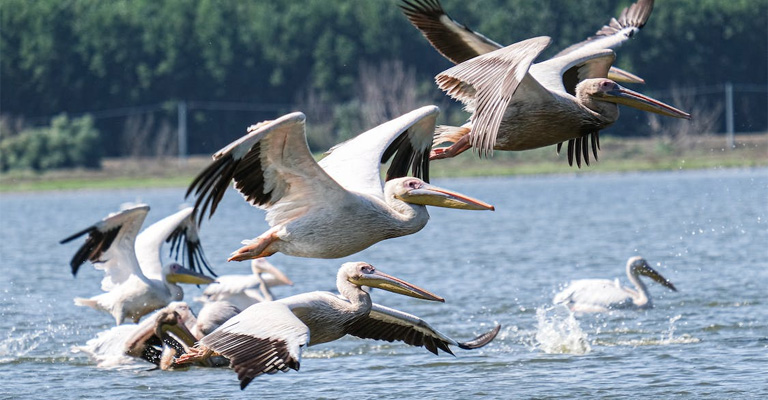
These are large birds that feed on fish, crustaceans, and amphibians. Pelicans fly in a V formation to take advantage of the updraft created by the bird in front.
Pelicans also cooperate with each other by forming a line or a circle to herd fish into shallow water.
These are some of the bird species that fly in a V formation.
What Is The V Formation Of Birds Called?
The V formation of birds is called the echelon formation. It is a linear arrangement of birds that fly behind and slightly to the side of the bird in front of them.
This formation helps the birds save energy, communicate, navigate, and stay safe during their long flights.
The V formation is not only used by birds but also by some human pilots, especially in military aviation and air shows.
How Do Birds Fly Without Getting Tired?
Birds are amazing creatures that can fly for long distances without getting tired. They have some special adaptations that help them conserve energy, communicate, navigate, and stay safe in the air.
Here are some of the ways that birds fly without getting tired:
Fewer Wingbeats
Birds can control the speed and frequency of their wingbeats, which allows them to save energy over long distances. Some birds, like the albatross, can fly for days without resting, thanks to their incredibly efficient wingbeats.
They also use the upwash of air created by the wingtip of the bird in front of them to reduce drag and increase lift.
Hollow Bones
Birds have a lightweight bone structure that helps them achieve lift with less energy expenditure.
Their bones are hollow and filled with air sacs that connect to their lungs. This also helps them breathe more efficiently and extract more oxygen from the air.
Air Resistance
Birds have a streamlined body shape that allows them to cut through the air with minimal resistance.
They also change the shape of their wings to alter their flight path and reduce drag. For example, they can fold their wings close to their body when diving or spread them wide when gliding.
Glide and Soar
Birds do not flap their wings all the time. They often switch between gliding and flapping flight, depending on the wind conditions and their altitude.
Gliding allows them to travel further with less effort while flapping helps them maintain speed and direction. Some birds, like eagles and vultures, also use thermals and updrafts to soar in the sky without flapping their wings.
Store Food In Their Crop
Birds need to eat regularly to maintain their energy levels, but they cannot afford to stop and feed during long flights.
To solve this problem, they have a special pouch at the base of their throat called the crop, where they can store food for later digestion. This allows them to eat quickly and then fly for hours without needing to eat again.
Sleep While Flying
Some birds have the amazing ability to sleep while flying, which helps them rest and recover during long journeys.
They do this by shutting down one half of their brain at a time while keeping the other half awake to control their flight.
This is called unihemispheric slow-wave sleep, and it allows birds to sleep with one eye open and watch for potential threats.
These are some of the ways that birds fly without getting tired.
FAQ
Birds fly in a V formation to conserve energy during long flights, enhance aerodynamic efficiency, and facilitate navigation. This behavior is commonly observed during migration.
The lead bird creates upwash, reducing air resistance for the trailing birds. This saves their energy and allows for longer flights.
No, not all species use the V formation. It’s more common among large birds with long migratory journeys, like geese and swans.
Yes, there is a leader at the front who experiences the highest air resistance. Birds take turns being the leader to share this demanding role.
Yes, the V formation helps with navigation. Birds can maintain visual contact with their companions, which assists in staying on course, especially during challenging weather conditions.
Conclusion
The phenomenon of birds flying in a V formation transcends the realms of aesthetics, revealing the extraordinary collaboration between avian instinct and environmental challenges.
In this synchronized ballet of wings, birds leverage aerodynamic efficiency, navigation guidance, and social bonds to conquer the skies during migration.
The V formation represents a powerful testament to nature’s ability to shape intricate behaviors that ensure survival and success in the face of adversity.
As we gaze upon this awe-inspiring display, we are reminded of the interconnectedness of all life forms and the enduring wonders of the natural world. The V formation serves as a beacon of unity, a testament to adaptation, and a symbol of the shared journey that spans both avian and human existence.